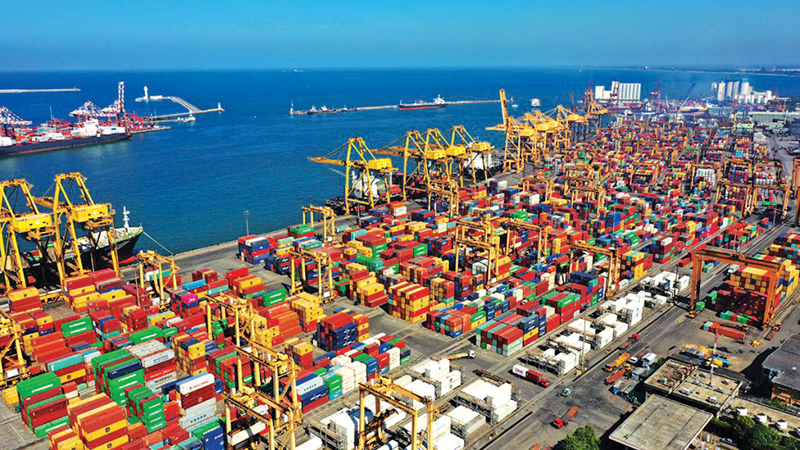Emerging transshipment hubs in India and Bangladesh could pose challenges if the expansion and technological upgrades at the Colombo Port continue to be delayed, a port sector expert said.
President, Transportation and Plantation Sectors of the John Keells Group, Zafir Hashim said India has been making rapid progress in developing its ports, with facilities like Vizhinjam, Mundra, and Chennai investing in deep-water terminals and automation. These improvements mean that more cargo, especially Indian transshipment traffic that currently passes through Colombo, could be handled domestically, reducing Sri Lanka’s dominance in the region.
For instance, the Vizhinjam Port in Kerala has commenced operations and plans to become a global transshipment hub in the future.
Significant investment is envisaged, thereby expanding the port’s handling capacity to three million TEUs by 2028. Thus, it is imperative that the Port of Colombo remains committed to its expansion plans to sustain its competitive edge in the region.
Bangladesh, while historically reliant on foreign ports for transshipment, is also making strides. The development of the Matarbari deep-sea port, expected to be operational by 2029, could allow Bangladesh to handle relatively larger vessels directly rather than relying on Colombo, Singapore, or Port Klang. Chattogram and Mongla Ports are expanding, and agreements with India to use these ports for transshipment will further shift cargo flows. However, given the natural limitations in terms of water depth, deviation time and distance, Bangladesh will continue to be a feeder-dominated port.
If Colombo is keen to remain relevant as a hub port, then expansion of infrastructure and more importantly at this point of time improving in port service efficiency is a must. With respect to Port Services there are two types of services a vessel makes use of: one offered by the terminal operators and the other by the Sri Lanka Ports Authority.
“Although we use state-of-the-art technology at the terminal side, and offer world class service, the service offered by the Sri Lanka Ports Authority needs to significantly improve,” Hashim said.
Shipping lines prioritise cost, efficiency, and turnaround time, and if competing ports in the region can offer comparable or better services, Colombo could see a decline in its strategic importance as a regional hub. The next few years with West Container Terminal -1 and East Container Terminal capacities coming up the capacity in Colombo will pretty much double.
“In terms of capacity, even though we are little late in adding new capacity, during the next few years we will have sufficient capacity. WCT-1 and ECT will add almost 6.8 mn TEUs to the current 7.5 mn TEU capacity available at the port of Colombo,” he said.




